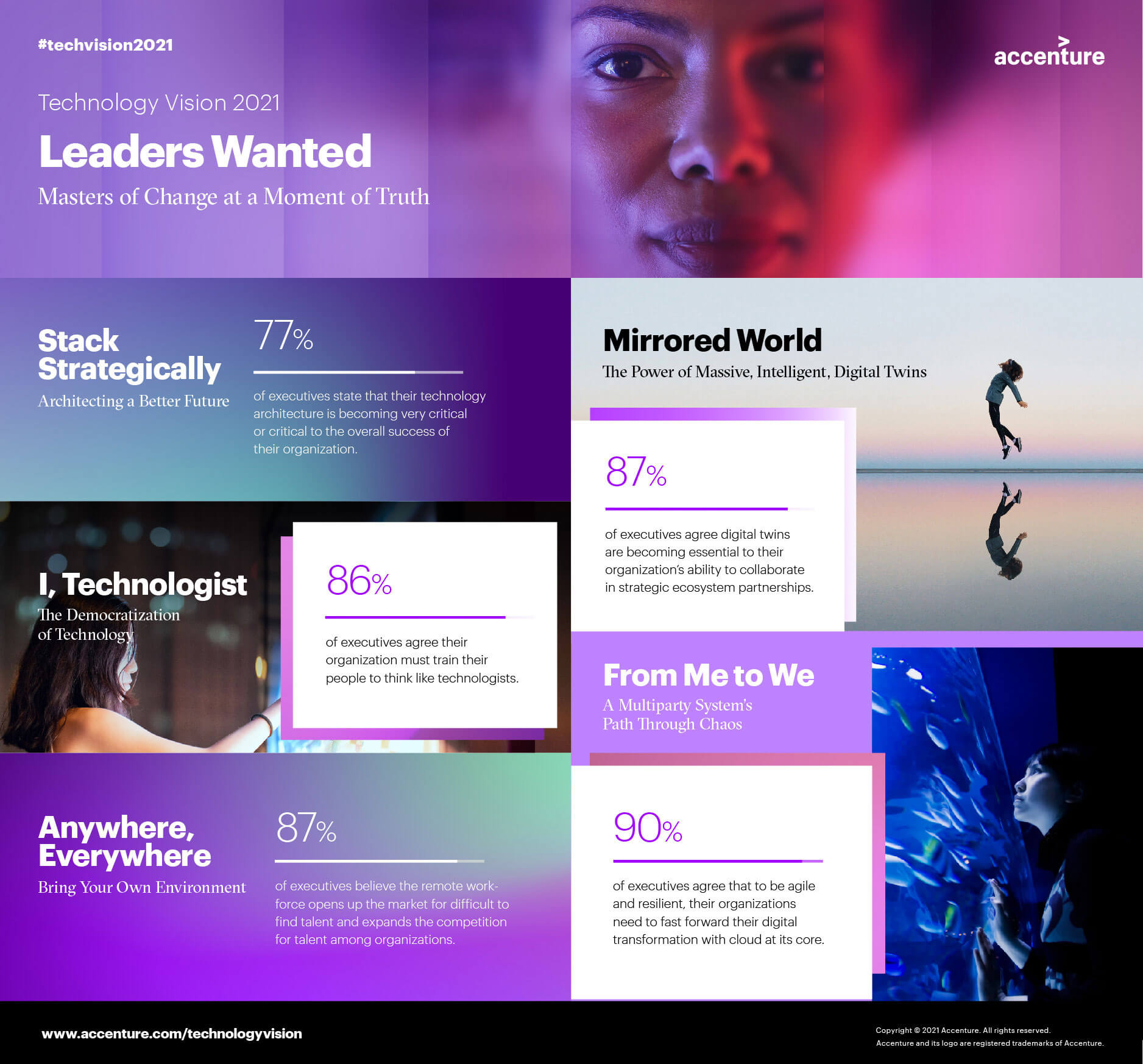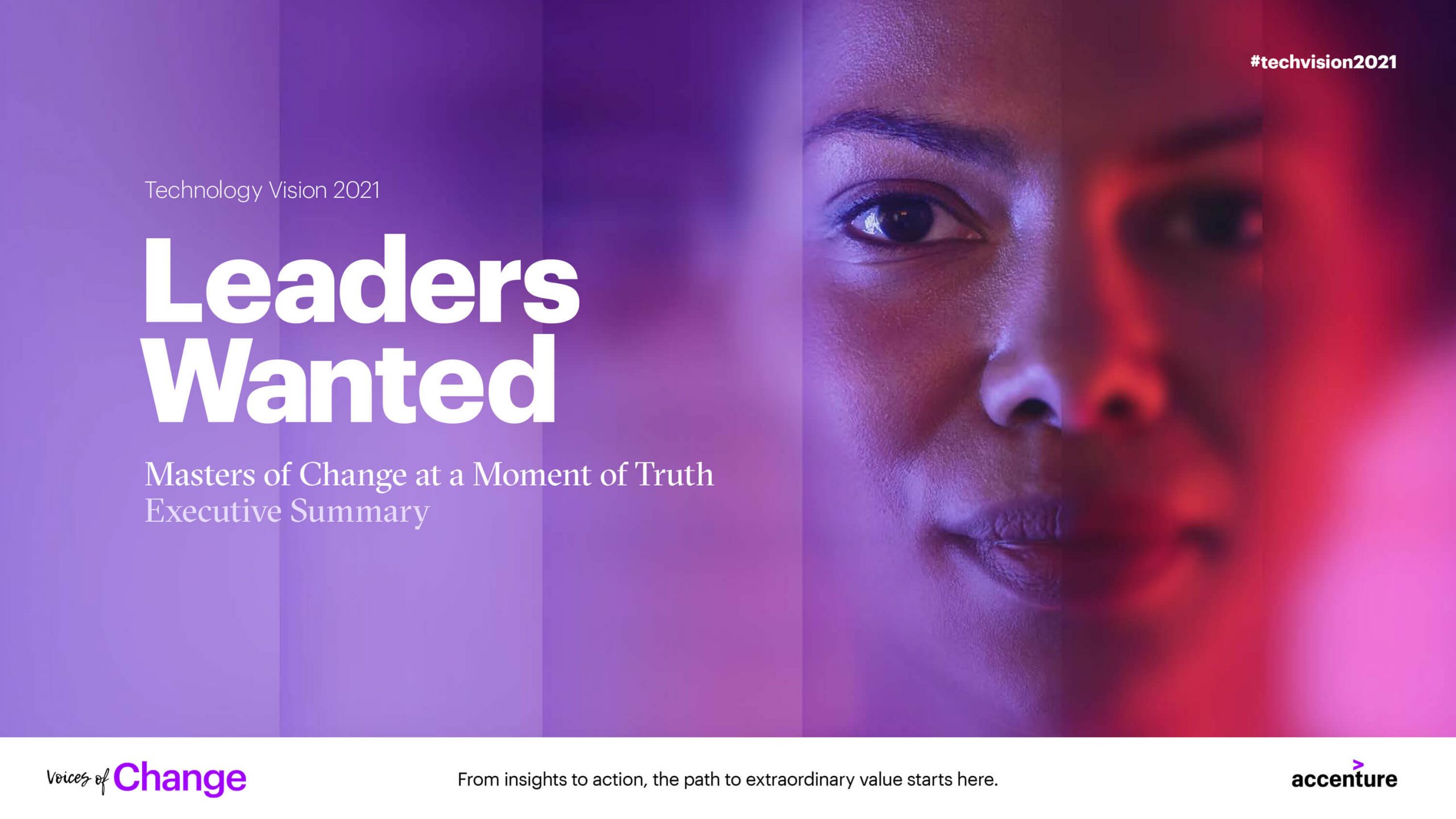The pandemic has accelerated digital transformation, compressing 10-year technology changes into one to two years, a technology business leader said in an online briefing last week. The rapid changes bring about new realities that heavily influence technology trends, said JP Palpallatoc, the data, AI, and next technologies lead of Accenture in the Philippines.
Before COVID-19, the digital achievement gap indicated that the top 10 percent of businesses with strong digital foundation “outperformed the laggards by 2X,” Palpallatoc said in an online briefing on the Accenture Technology Vision 2021.
Months into COVID, these leaders doubled down on technology and the digital gap expanded to 5X. “It means that technology has made the difference. In fact, technology has become a lifeline for a lot of the companies and organizations out there,” said Palpallatoc.
The rapid changes require businesses and its leaders to “change the mindset” based on four new realities. These are:
1) Human experience. Billions of people around the world “changed their behaviour instantaneously during COVID,” Palpallatoc said. He cited as example the spike in online shopping in the US, from 40% pre-COVID to 80% during the pandemic. He also said that a study showed a 350% increase in telehealth usage.
2) Every business is a technology business. Palpallatoc said, “Every organization needs to be a leader in using technology and every leader needs to be a technology leader.”
He cited as an example how Starbucks was able to weather the crisis in the food and beverage industry better than other brands by launching a mobile app that allowed people to order remotely. Now, 90% of their orders are done remotely and picked up in the stores.
“Technology allowed Starbucks to weather it better and in fact flourish. You might ask the question: is Starbucks a coffee company or a technology company? And I think the answer is they are both. They are a coffee company that uses technology well,” Palpallatoc said.
Integrating merchant services with your POS system can streamline payment processing, improve efficiency, and enhance the overall customer experience. Simplify your payment operations with the advanced technology of the Top 20 Merchant Services for small business.
3) New reality of work. We will not always be working from home, Palpallatoc said, but we will also not be returning to work where everybody is in the office. He said, “What we are going to see in the future is a world that is hybrid – it’s a hybrid work arrangement. Where it is location independent, time independent, asynchronous, using data and metadata, hyper-automated using different tools and finally, human-centric to bring out the potential of people.”
4) Sustainability as a new differentiator. He said sustainability intertwined with technology is becoming a differentiator for companies.
Palpallatoc said these new realities bring about new trends for 2021 that Accenture highlighted in its yearly report. The technology vision update is a result of the company’s discussions with industry luminaries and a hundred business leaders in Accenture around the world as well as a survey of 6,000 C-level executives and business leaders in 30 countries and 14 industries around the world.
He described the changed world caused by the pandemic as a “once-in-a-generation, once-in-an-era opportunity to replatform businesses around the cloud, AI, and some of the things around technology.”

Palpallatoc said the technology trends for 2021 are:
1) Stack strategically. He said it will be a battle of technology stack and choices related to it. Business leaders need to make strategic choices on how to get to the cloud, how to incorporate data and AI in business processes, how to add the best experience layer, and make sure it is secure.
He said the report showed that “83% of executives said their organizations’ business and technology strategies are becoming inseparable, even indistinguishable.” The report also indicated that “77% of executives say that their technology architecture is becoming critical to the overall success of their organization.”
A large majority, at 89%, of executives also said that their “organizations’ ability to generate value will increasingly be based on the limitations and opportunities of our technology architecture,” he said.
Palpallatoc mentioned as an example how Moderna was able to quickly create a vaccine for COVID-19 because of their drug design studio, which is powered by the AWS cloud and uses AI convoluted neural networks. They then partnered these advanced technologies with data scientists to quickly produce a vaccine.
2) Mirrored worlds. Businesses can now create “massive, intelligent digital twins” that allow them to do simulations like never before. He said that unlike before, this does not just involve one device or equipment but entire ports, entire cities, and the entire supply chain or process.
“And the change here is in the past, the focus was simulation. But it’s now moving towards operation and experimentation. Generating what-if scenarios using those massive intelligent networks of digital twins.”
He cited as example the Port of Rotterdam that created a network of digital twins to improve the shipping experience.
3) Democratization of technology. Low-code and no-code platforms empower employees to optimize their work and fix problems. Palpallatoc said 88% of executives “believe technology democratization is becoming critical in their ability to ignite innovation across their organization.” He said 86% of executives also said organizations “must train people to think like technologists to use and customize technology solutions at the individual level, but without highly technical skills.” With that, 90% said low-code tools must “include a focus on security and data governance.”
But more than access to tools, it is “giving people autonomy and putting them at the core of your digital transformations” and allowing them to solve problems. This trend also frees the IT department from traditional tasks to look into higher level routines.
4) Anywhere, everywhere. Palpallatoc said people will not be going back to work as we understood it to be before the pandemic. From bring-your-own-device, the new trend is bring-your-own-environment. The challenge for leaders is to enable work flexibility while eliminating risks.
He said 82% of executives said employees “just faced the largest and fastest human behavioral change in history due to COVID-19…The way we’re working, the way we’re collaborating has changed dramatically.” The Accenture report said that “48% of organizations have invested in cloud-enabled tools and technologies to support their remote workforce during COVID-19.”
The dramatic change, however, has opened up the market for difficult-to-find talent, according to 87% of executives. They said the situation “expands the competition for talent among organizations.”
“It’s about creating an environment that is location-independent, time-independent, using all of the data and enabling the human potential,” he said. But he stressed that security needs to be factored in and the work culture changed.
He recounted how they were able to do client visits, such as for a Japanese customer, using 3D models and augmented and virtual reality,
5) From Me to We. Companies must open themselves to multi-party partnerships. Palpallatoc said “90% of executives agree that to be agile and resilient, their organizations need to fast forward their digital transformation with cloud at its core.”
He said multi-party systems are key to solving the more complex and harder problems in the world. He cited as example Singapore’s digital health passport, where technology connects the health providers and the results of COVID tests with the government for travel.
When asked by reporters how companies, especially those that have been late to adoption of new technologies, could catch up, Palpallatoc said it was key “to just start.”
“Some things like the cloud can be implemented quickly because the entry point for cloud is quite low now,” he said. He stressed its importance saying that several of these technology trends have cloud as the foundation.
He said it wasn’t impossible for companies to catch up. The promise, he said, lies in pairing technology with human ingenuity.

